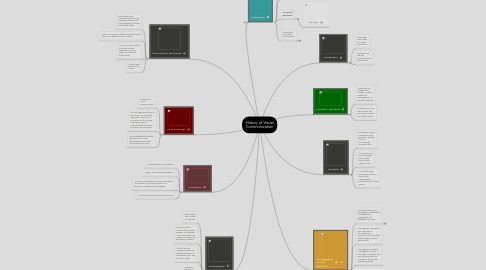History of Visual Communication
저자: Sydney McMinn


1. Gutenberg
1.1. Created the first book
1.1.1. Session Rule 1
1.1.2. Session Rule 2
1.2. First book he ever released with the metal type was the two volume bible.
1.3. He created metal type
1.3.1. Metal Type
1.4. Created the metal type printing press
1.4.1. Goal 1
1.4.2. Goal 2
2. Cave Paintings
2.1. First from of Visual communication.
2.2. The paintings were there to tell stories and vents that happened, instructional and visual aid for hunting techniques, and for magical/religious reasons so a wish may come true.
2.3. Cave paintings are beautiful, detailed, and colorful representations found on the inside of cave walls.
3. Cuneiform
3.1. Usually written on clay tablets
3.2. Began as a series of pictograms
3.3. It evolved over time becoming more abstract, the number of characters grew, and it became a wedged shape language
3.4. Used to document business transactions
4. Photography
4.1. Glass plates were coated with gelatin
4.2. Richard Maddox created the dry plate process. This process is still used today as a process for taking and developing pictures.
4.3. The 4th century camera obscura was used by scholars and philosophers as a way to observe light.
4.4. Polaroid is the first of instant photography
4.5. Motion photography soon became known into the world after races with horses. A series of cameras were set up to tell which horse would win.
5. Illuminated Manuscript
5.1. Scrolls were soon replaced by codex in the early years because the codex helped the format of the Bible better.
5.2. Later on the Roman added punctuation and lower case letters into their writing.
5.3. The codex was a whole lot better to keep organized and very easy to read rather than a scroll.
5.4. Monks made these for the church.
6. Phonetic Alphabet
6.1. It was either an independent creation, a direct variation of Hieroglyphics, or ties with cuneiform.
6.2. It's based on the on the principle that one sign represents one spoken sound.
7. Hieroglyphics and the Egyptians
7.1. The formal writings of hieroglyphics contained a combination of logographic and alphabetic elements.
7.1.1. Sub Idea 1
7.1.2. Sub Idea 2
